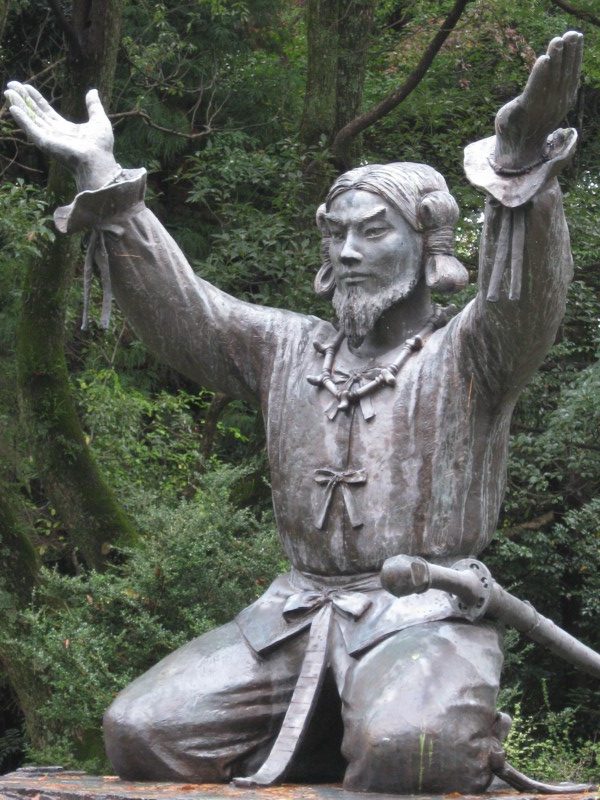 Most people assume Ise Jingu is Japan’s oldest shrine. Mythical and archaeological evidence however says that it is Izumo Taisha. It was once the country’s most prestigious shrine, being supplanted by the propagandists of Yamato who incorporated it into the imperial mythology of the Kojiki (712).
Most people assume Ise Jingu is Japan’s oldest shrine. Mythical and archaeological evidence however says that it is Izumo Taisha. It was once the country’s most prestigious shrine, being supplanted by the propagandists of Yamato who incorporated it into the imperial mythology of the Kojiki (712).
In ‘The Infrastrurcture of the Gods’, a paper for Japan Review (no 29, 2016), Richard Torrance lays out the evidence available for the former supremacy of Izumo, which was for centuries an independent kingdom. The big question is when and how did it become subordinate to the Yamato kingdom?

Bronze mirror, symbol of authority, found in Shimane and exhibited in the Izumo museum
The paper argues that Izumo remained independent through the sixth and early seventh centuries. If this is true, then it would have fallen under Yamato power some hundred years before Kojiki was written. This makes good sense, in that the mythology is clearly an attempt to justify the Yamato emperor’s right to rule. It would explain too why the Izumo cycle occupies such a large chunk of the book, for there would have been a need to justify the subjugation of such powerful gods and traditions.
Recent times have seen remarkable finds that have enhanced the reputation of Izumo as a cultural and political powerhouse. In 1984 at Kojindani, 358 Yayoi-era bronze swords were unearthed, a staggering figure for one site considering that up to that point the total number found in the whole country was 300.
Afterwards further bronze objects were discovered, including in 1996 at Kamo Iwakura 39 bronze bells. In addition, burial sites of powerful figures with links to the continent were brought to light at Nishidani, where there is evidence of successive generations of chieftains.
The conclusion Torrance comes to is that an Izumo identity was formed in the second century which lasted for four or five centuries. This may not have been a political so much as a cultural realm, based on links with Silla. Chieftains and priests within this cultural realm may have at times acted as ‘kings’, or ruled in alliance with others, or been vassals. How and when the region became subservient to Yamato remains unclear, but Torrance suggests it may have been incremental rather than a single event.
*************
Concerning Izumo’s longevity compared to Ise, Wikipedia has this so say (adapted version):
“At one time, the Japanese islands were controlled from Izumo, according to Shinto myths. Izumo’s main structure was originally constructed to glorify the great achievement of Ōkuninushi, considered the creator of Japan. Ōkuninushi was devoted to the building of the nation, in which he shared many joys and sorrows with the ancestors of the land. In addition, Ōkuninushi is considered the god of happiness, as well as the god who establishes good relationships.
There is no knowledge of exactly when Izumo Shrine was built, but a record compiled around 950 (Heian period) describes it as the highest building, reaching approximately 48 meters, which exceeds in height the 45 meter-tall temple that enshrined the Great Image of Buddha, Tōdai-ji. This was due to early Shinto cosmology, when the people believed the gods (kami) were above the human world and belonged to the most majestic parts of nature. Therefore, Izumo-taisha could have been an attempt to create a place for the kami that would be above humans.
Evidence of the original Grand Shrine has been found, for example part of one of the pillars for the structure, consisting of three cedar trees with a three-meter diameter at its base. It is on display near the shrine.”

Okuninushi, once lord and master of the land – until the Yamato emperors overwrote his story with descent from high heaven and a sun goddess


Leave a Reply